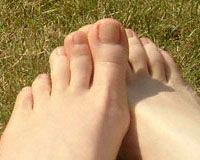| . |  |
. |
Tokyo, Japan (SPX) Feb 26, 2010 Baby monitors of the future could translate infant cries, so that parents will know for certain whether their child is sleepy, hungry, needing a change, or in pain. Japanese scientists report details of a statistical computer program that can analyze a baby's crying in the International Journal of Biometrics. As any new parent knows, babies have a very loud method of revealing their emotional state - crying. Unfortunately, the parenting handbook does not offer guidance on how to determine what the crying means. Parents sometimes learn with experience that their child's cries may be slightly different depending on their cause, whether hunger or discomfort. Now, engineers in Japan have turned to an approach to product design, known as kansei engineering, invented in the 1970s by Professor Mitsuo Nagamachi, Dean of Hiroshima International University, which aims to "measure" feelings and emotions. Tomomasa Nagashima of the Department of Computer Science and Systems Engineering, at Muroran Institute of Technology, in Hokkaido and colleagues explain that the fundamental problem in building an emotion detector for baby's crying is that the baby cannot confirm verbally what its cries mean. Various researchers have tried to classify infant emotions based on an analysis of the crying pattern but with little success so far. The team has employed sound pattern recognition approach that uses a statistical analysis of the frequency of cries and the power function of the audio spectrum to classify different types of crying. They were then able to correlate the different recorded audio spectra with a baby's emotional state as confirmed by the child's parents. In their tests recordings of crying babies with a painful genetic disorder, were used to make differentiating between the babies' pained cries and other types of crying more obvious. They achieved 100% success rate in a validation to classify pained cries and "normal" cries. The research has developed a sound theoretical method for classification of infant emotions, although limited to a specific emotion, based on analysis of the audio spectra of the baby's cries. The technique might one day be incorporated into a portable electronic device, or app, to help parents or carers decide on a course of action when their child is crying. "Statistical method for classifying cries of baby based on pattern recognition of power spectrum" in Int. J. Biometrics, 2010, 2, 113-123
Share This Article With Planet Earth
Related Links Inderscience Publishers All About Human Beings and How We Got To Be Here
 The Cost Of Being On Your Toes
The Cost Of Being On Your ToesSalt Lake City UT (SPX) Feb 25, 2010 Humans, other great apes and bears are among the few animals that step first on the heel when walking, and then roll onto the ball of the foot and toes. Now, a University of Utah study shows the advantage: Compared with heel-first walking, it takes 53 percent more energy to walk on the balls of your feet, and 83 percent more energy to walk on your toes. "Our heel touches the ground at the ... read more |
|
| The content herein, unless otherwise known to be public domain, are Copyright 1995-2010 - SpaceDaily. AFP and UPI Wire Stories are copyright Agence France-Presse and United Press International. ESA Portal Reports are copyright European Space Agency. All NASA sourced material is public domain. Additional copyrights may apply in whole or part to other bona fide parties. Advertising does not imply endorsement,agreement or approval of any opinions, statements or information provided by SpaceDaily on any Web page published or hosted by SpaceDaily. Privacy Statement |